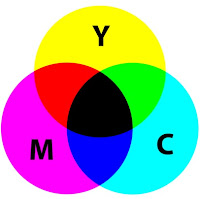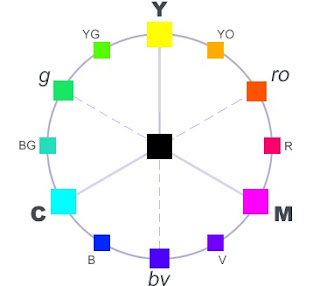 Are u an Artist, a Painter, a CAD
Design Engineer, an Architect, a Colour specialist, an art student, a Make-up
artist, a Book Publisher or an Art Exhibitor? Are u a lady who needs to mix her
colours in her make-up kit to look lovely for the day?
Are u an Artist, a Painter, a CAD
Design Engineer, an Architect, a Colour specialist, an art student, a Make-up
artist, a Book Publisher or an Art Exhibitor? Are u a lady who needs to mix her
colours in her make-up kit to look lovely for the day?
Remember, popular quotes
are used to encourage nice dressing, nice colour combinations, such as: “looking
good is good business”; “the way you
dress is the way you will be addressed” and “dressing does not make a man but
many a man has got a job through dressing”. Here are colour mixes like the CMYK model in
the pictures herein. The commonly used colour mixes are in them. Do the art,
try the mixes and let me know.
So, instead of mixing blue and
yellow to make green and then mixing that green with Cadmium Red; there's
actually a way to get brown by only mixing two colours. Here's the point where
reading my first colour mixing article would come in handy. So get ready for my
colour class. People who mix colours may be familiar with primary colours, and
know them but may have challenges with colours like brown and black. How do you
get a brown?

 Brown is a tertiary colour, it is acquired through combining a
primary and a tertiary colour. Orange is a secondary colour. To create it, we
must combine yellow and red. Add a little yellow to a larger amount of red. To
be specific, use the proportion, say 1: 10 for yellow: red. As a result, the
orange that appears will be dark, more reddish and yellowish. This is the ideal
colour to mix with blue. Remember; don’t add more than 10% of blue to the
mixture. It will create chocolaty brown which looks very rich. If it is still too orange for you, just add
the blue colour to make it browner.
Brown is a tertiary colour, it is acquired through combining a
primary and a tertiary colour. Orange is a secondary colour. To create it, we
must combine yellow and red. Add a little yellow to a larger amount of red. To
be specific, use the proportion, say 1: 10 for yellow: red. As a result, the
orange that appears will be dark, more reddish and yellowish. This is the ideal
colour to mix with blue. Remember; don’t add more than 10% of blue to the
mixture. It will create chocolaty brown which looks very rich. If it is still too orange for you, just add
the blue colour to make it browner.
You can also adjust the darkness
or lightness of the brown by adding more blue or orange. Adding blue will make
the brown darker, while orange will make it lighter.
Basically, there are only three
primary colours: red, yellow and blue. If you are a stranger to the term,
primary colours are colours which are not derived from or by mixing any other colours,
they are the basic colours. These primary colours can be combined to make other
colours. In fact, just having these colours are enough to create any other colours.
 When we combine the resulting colour
with white, we will create a lighter tone or tint of the colour. When we
combine it with black, we will get a darker hue or shade of that colour.
Technically, black and white are not found in the colour wheel. Black is the colour
seen with an absence of light. Meanwhile, white contains all colour combined in
a perfect balance. We can create black
by mixing all primary colours, each with the same proportion.
When we combine the resulting colour
with white, we will create a lighter tone or tint of the colour. When we
combine it with black, we will get a darker hue or shade of that colour.
Technically, black and white are not found in the colour wheel. Black is the colour
seen with an absence of light. Meanwhile, white contains all colour combined in
a perfect balance. We can create black
by mixing all primary colours, each with the same proportion.
Colours that we acquire by mixing
two primary colours are called secondary colours. These colours are orange,
green and purple. We can have orange by mixing yellow and red. To get green
from primary colours, just mix blue and yellow. Meanwhile, blue and red will
give us purple.
Tertiary colours are achieved by
combining a primary with a secondary colour. Because of this, the hue is named
using two words separated by a dash. The first word must be the primary colour,
such as yellow-orange, yellow-green, red-orange, red-purple, blue-purple or
blue-green. Brown is categorized a tertiary colour and it is important to
remember to understand what colours make brown.

No comments:
Post a Comment